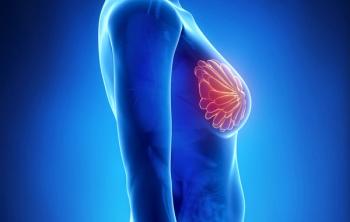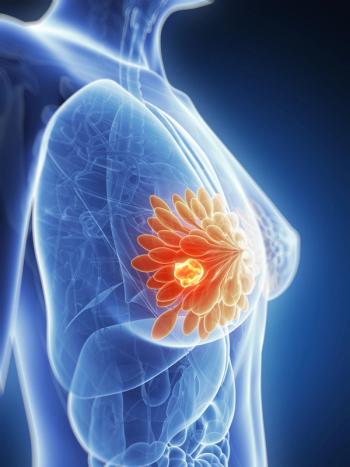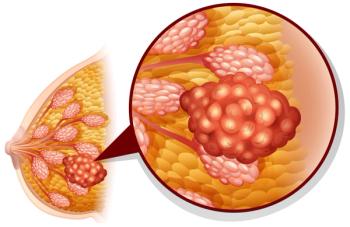
- ONCOLOGY Vol 15 No 1
- Volume 15
- Issue 1
Current Management of Opioid-Related Side Effects
The optimal management of opioid-related side effects is hampered by a lack of comparative studies of management strategies. The prevalence of such side effects is influenced by the extent of disease, the patient’s
Dr. O’Mahony and coauthors areto be congratulated on a detailedsummary of this issue from both a clinical and academic perspective. There areareas, however, where I believe there should be a different emphasis, oropinions stated with which I disagree.
Unaddressed Issues
One issue not addressed in the article is the problem ofinformation from studies in opioids for pain that is not caused by cancer.Another is studies in cancer patients in whom the pain pathophysiology, eg,postoperative pain, is not from the cancer.[1] I do not accept that these areappropriate scenarios for examining the efficacy or side effects of an opioidfor cancer pain.
The most important issue that the article fails to discuss isthe importance of the specificity and individualization of opioid dosing toprevent side-effects. In fact, studies that might inform such a discussionthosethat systematically examine opioid side effects, examine metabolites of commonlyused opioids, and compare the efficacy and side effects of agonist opioidsarelacking.
It is important to distinguish between the frequency andseverity of symptoms. A minor symptom that is persistent may be more troublingthan one of greater severity that is intermittent.[2] The authors refer tovalidated instruments for patient assessment; these are problematic because ofthe burden placed on patients for data collection (particularly the seriouslyill) and because many instruments are unsatisfactory for methodologic andpsychometric reasons.
Itch
Notably, few differences in efficacy and side effects amongagonist opioids have been reported in the available literature. Morphine andhydromorphone appear to have comparable efficacy and side effects except in thearea of opioid-induced itch.[3] However, to attribute the differences in sideeffects among the agonist opioids to either their receptor interactions ormetabolites is speculative. We know little about these issues during chronicdosing or, for that matter, about the interaction between these metabolites andreceptors.
Nausea and Vomiting
The statement that there is no evidence suggesting that onemu-agonist is any less emetic than another is too strong; oxycodone may be lessemetic than morphine.[4] I was unsure what was being recommended withobserver-rated measures of nausea, as these are subjective and can only beassessed by the patient. An important area not referred to is the effect offemale gender on nausea and vomiting.
For management of nausea and vomiting, another strategy issimply to change the formulation of a specific opioid, eg, fromsustained-release to immediate-release morphine. Another is to administer oralopioids after food. It is important to discontinue nonessential medications butequally important to remember the value of adjuvant analgesics. For example, ifan opioid is causing significant nausea and vomiting, it may be more importantto increase nonsteroidal anti-inflammatory agents than to discontinue them.
I disagree with the recommendations concerning antiemetics.Metoclopramide is the drug of choice for opioid-induced nausea and vomiting.[5]This holds true unless there are significant associated neuropsychologicalsymptoms, in which case, haloperidol should be given.
Constipation
With regard to constipation, I was surprised the authors did notrefer to codeine. There are specific primary cancer sites associated with ahigher risk of bowel obstruction (abdominal carcinomatosis, cancer of the ovaryand pancreas). Codeine is more constipating than other agonist opioids and in myview, should not be routinely used because of this. Moreover, there is evidencethat fentanyl and methadone are less constipating than morphine, and if opioidrotation is contemplated, preference should be given to them.
I disagree with dietary fiber as an initial strategy forconstipation prophylaxis. All patients started on regular opioids should beprescribed laxatives simultaneously. Bulk laxatives are inappropriate because ofthe frequency of early satiety. Patient education is essential for effectivelaxative use, as are regular checks on compliance.
I believe the classification of laxativeseg, the reference tomagnesium oxide as a lubricant laxativewould not meet general acceptance.Again, adjuvant analgesics are important; powerful nonopioid analgesics such asketorolac can be used to reduce opioid dose and improve the opioid bowelsyndrome.[6]
I agree that laxative combinations are important but feel thatdifferent drugs are better employed and at higher doses.[1] Fecal incontinencein the frail elderly should be mentioned as a side effect of stimulantlaxatives.
Cognitive Side Effects
The reference to "paradoxical pain" with increasingdoses of opioids raises an important issue about the quality of opioidprescribing. Another interpretation of this phenomenon is that the wrong dosehas been chosen, and as a result, the patient is delirious and misreportingpain. This occurs commonly when the prescriber has failed to distinguish betweenintermittent (often incident) and continuous pain. Consequently, the patient isbeing dosed around the clock for pain that is intermittent, and excessneuropsychological side effects develop. We also have evidence that there areroute-related differences in morphine metabolism[7] that may affect cognitivefunction.
I disagree with empiric opioid rotation as an initial maneuver.The frequent recommendation to rotate opioids may actually cause a deteriorationin analgesic management. Indeed, the data to support opioid rotation as aroutine strategy are speculative. Cognitive side effects are partly dependent ondosing skill. Before rotation, the most important strategy is to check thatcurrent opioid dosing is correct and tailored to the pain pattern andpathophysiology. I agree with the recommendations that methylphenidate beprescribed to counter sedation, but not for other neuropsychological symptoms. Ialso take issue with the apparent recommendation that tricyclic antidepressantsbe used to manage opioid-related cognitive deficits. I feel these agents(particularly amitriptyline) should be avoided because of their cognitive sideeffects.
Myoclonus
There is a possible link between myoclonus and normorphine thatthe authors did not identify. Myoclonus may also be a manifestation of carbondioxide retention or a toxicity of other commonly prescribed drugs, includingtricyclic antidepressants.[8]
Respiratory Depression
I disagree that respiratory depression is greatest in the opioidnaive. This problem most frequently arises in those who develop intercurrentcardiorespiratory or metabolic illnesses, have inappropriate changes in opioiddosing, or are prescribed concomitant sedative medications without respiratoryfunction being considered. The only relevant published study, which wasconducted in hospice patients, did not show significant ventilatory impairmentfrom morphine.[9] The issue of interventions with nonopioid analgesics that mayprecipitate respiratory depression is not given sufficient weight as a possibleprecipitant.[10]
The Management Algorithms
I disagree with the concept of oral laxative monotherapy forconstipation, as mentioned above (Figure 2 of the article by Dr. O’Mahony etal). Management of impaction should include nitroglycerin paste or nitroglycerintablets to treat perianal spasm.
Figure 3 illustrates the protocol for sedation. The use ofpsychostimulants before opioid dosing adjustments is unwise. If pain is wellcontrolled, there should first be a reduction in the basal rate. If this isineffective or impossible, psychostimulants should then be added. Assessmentmust include a review of the appropriateness of the opioids prescribed.
To prevent cognitive impairment, the authors suggest that theopioid dose be reduced after pharmacotherapy (Figure4). If pain control isadequate, the opioid dose should be reduced or respecified to the current painpattern. This should be done before pharmacotherapy or opioid rotation. Idisagree with the use of benzodiazepines and phenothiazines here, given theirsedative effects. The drug of choice is haloperidol.
References:
1. Walsh D: Pharmacological management of cancer pain. SeminOncol 27(1):45-63, 2000.
2. Glare P, Walsh D, Nelson K, et al: Common symptoms inpatients taking morphine for chronic cancer pain: A prospective study. J PainSymptom Manage (in press, 2000)
3. Katcher J, Walsh D: Opioid-induced itching: Morphine sulfateand hydromorphone hydrochloride. J Pain Symptom Manage 17(1):70-72, 1999.
4. Glare P, Walsh D: Dose-ranging study of oxycodone for chronicpain in advanced cancer. J Clin Oncol 11(5):973-978, 1993.
5. David MP, Walsh D: Treatment of nausea and vomiting inadvanced cancer. Support Care Cancer 8:444-452, 2000.
6. Joishy S, Walsh D: The opioid-sparing effects of intravenousKetorolac as an adjuvant analgesic in cancer pain: Application in bonemetastases and the opioid bowel syndrome. J Pain Symptom Manage 16(5):334-339,1998.
7. Glare P, Walsh D: Clinical pharmacokinetics of morphine. TherDrug Monit 13(1):1-23, 1991.
8. Sarhill N, Walsh D, David M, et al: Methadone-inducedmyoclonus. Am J Hospice Pall Care (in press, 2000).
9. Walsh TD: Opiates and respiratory function in advancedcancer. Recent Results Cancer Res 89:115-117, 1984.
10. Quevedo F, Walsh D: Morphine-induced ventilatory failureafter spinal cord compression. J Pain Symptom Manage 18(2):140-142, 1999.
Articles in this issue
almost 25 years ago
Perspectives on the Use of Fluorinated Pyrimidinesalmost 25 years ago
Nursing Strategies for Patients on Oral Chemotherapyalmost 25 years ago
Capecitabine in Colorectal Canceralmost 25 years ago
UFT in the Treatment of Colorectal and Breast Canceralmost 25 years ago
Clinical Status of Capecitabine in the Treatment of Breast Canceralmost 25 years ago
Patient Selection for Oral Chemotherapyalmost 25 years ago
Other Fluorinated Pyrimidines in the Treatment of Solid TumorsNewsletter
Stay up to date on recent advances in the multidisciplinary approach to cancer.





















































































